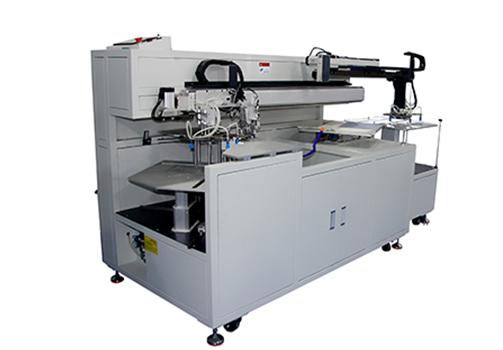CCD screen printing machine to remove the way of screen fouling
What is the method of CCD screen printing machine to remove screen dirt?
When using screen printing press for screen printing production, we cannot avoid screen printing decontamination. Frequent use of screen printing presses for screen printing of different types of products leads to dirt on the dirty screen, causing waste, affecting the printing quality and shortening the service life of templates.
Two, so what are the methods of screen printing machine to remove screen scale?
Remove contaminants from the screen when there is dust or dry ink on the printed part of the picture. When the press stops, the net frame should be lifted. At this point, some operators will wipe the underside of the template with an emery cloth dampened with solvent. It was loud enough to be heard throughout the printing shop, and the molds were often damaged.
The operator rarely rubbed the stencil print surface hard because he knew that the sharpness of the printed drawing required that all edges of the image and text maintain a clear emulsified layer image-text interface. Hard friction can damage the graphical interface of the emulsion layer, or even erase the emulsion layer, leaving only bare mesh.
When printing high-screen color images, the emulsifier film under the silk thread is only 5-6 μm thick, and the silk thread of the net itself may be only 30um in diameter, which cannot withstand hard friction. Therefore, the key to avoid coarse decontamination is to prevent the template from being contaminated in the first place.
The main cause of water leakage is improper ink control, in the use of solvent or water-based ink, ink will dry on the net, the reason is too thin or too thick ink. When using UV curable ink, try to protect the screen from UV lamps and sunlight.
Another ink control problem and improper printing speed control will lead to uneven ink supply, resulting in insufficient ink screen drying quickly.
The final cause of ink drying is improper scraper Settings or wear. When printing fine images with high mesh number, the scraping plate needs deformation or wear in the normal use process, and the surrounding image clarity will be reduced. This indicates that the ink is improperly moving through the mesh. If the problem is not solved in time, the ink will dry and fixed on the net. In order to avoid the above problems, the scraper should be rotated regularly to extend its scraping life, or until the graphic printing quality does not decline before using a new scraper.
The use of electrostatic scavengers and printing material decontamination devices can also prevent the transfer of dust and dirt from the printed surface to the web.
Three, what if the template is contaminated?
With a flatbed printer, after printing a set of papers, stop the printer and then enter a sheet of blotting paper so that the screen is in contact with the blotting paper.
Leave the screen in print position, then wipe the dust on the screen scraping surface with a soft, non-abrasive cloth dipped with screen cleaner. Do not apply too much force or dust will fall through the mesh onto the absorbent paper below. If necessary, use another piece of absorbent paper to repeatedly clean the web. Some of the dust particles that fall on it may be too large to pass through the net, but they can be stuck together with a soft cloth. After the template is cleaned, it can be dried with a blower (called "cold air").
Because of the different design and construction, there are different situations when cleaning a rotary screen press, it is not possible to clean dirt on absorbent paper like a normal screen press. Fortunately, due to the relatively fast printing speed, ink is less likely to dry online. If this is the case, when printing live pieces, first stop the press and then dip the top of the stencil of the printed image and text section in screen cleaner or thinner with a non-abrasive soft cloth, taking care not to scrub the grime in the mesh with the solvent.
Sometimes it is necessary to remove dust from under the template, in which case the dust should be gently wiped with a soft cloth, not too hard. The above cleaning and decontamination methods should be used frequently in the production process to extend the service life of screen printing presses and screen printing presses and reduce the reject rate.
